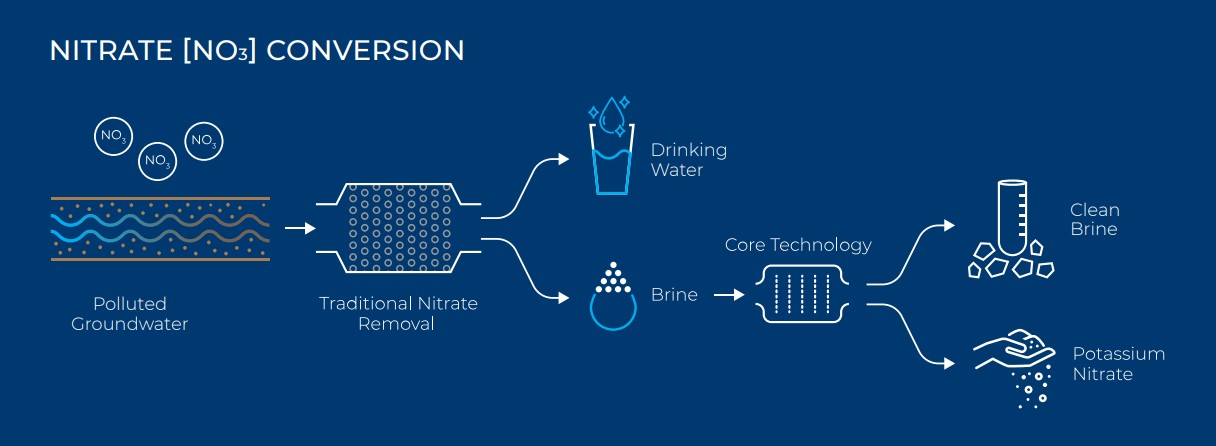Removal of Nitrate from Groundwater -
a Novel ZLD Discharge Technology
Nitrate is one of the most dominant drinking water pollutants, with levels exceeding the maximum contaminant level (MCL) of the EPA goal in 3% of USA’s surface waters and 6% of its groundwaters. In Europe, nitrate concentrations have gradually increased over the last few decades and sometimes even doubled (WHO, 2016). Among the health risks attributed to the consumption of nitrate are Methemoglobinemia and some types of cancer.
COMMON GROUNDWATER TREATMENT TECHNOLOGIES FOR NITRATE REMOVAL
The most common technology used for the removal of nitrate from groundwater is ion exchange (IX). This method has the advantages of reliability, durability, regenerability and relatively low downtime (the ratio between the time of operation to the time of regeneration). The main disadvantage of IX is the production of toxic brine containing high levels of nitrate. Because nitrate is a macro-contaminant (i.e., present at tens to hundreds of milligrams per liter), the regeneration frequency and brine production is very high, resulting in intensive need of haulage to designated sites, which are sometimes located very far from the treated wells.

Proprietary NBT platform – free of hazardous brine haulage
ToxSorb’s NBT technology enables the reuse of brine as a regenerant and eliminates the need for intensive frequent hauling of large amounts of toxic liquids. By that, the IX’s biggest disadvantage becomes redundant without affecting regeneration quality. For example, a 1,000 m3/h well contaminated with 62 mg/l of nitrate and 48 mg/l of sulfate will create 40,000 m3 of hazardous brine per year. Implementing NBT to treat well water will eliminate the need for brine haulage. Higher concentrations of sulfate will increase the amount of hazardous brine produced due to more frequent regeneration, making NBT even more worthwhile.
Modular system enables continuous
nitrate removal from drinking water
NBT is a modular component, combined with a traditional IX platform, and enables continuous operation of the nitrate removal system. NBT does not affect chloride concentration, the dominant regenerant ion needed for the elution of nitrate from the exhausted IX column. NBT creates an advantage of near Zero Liquid Discharge (ZLD) and can become a game changer in nitrate removal from drinking water.



